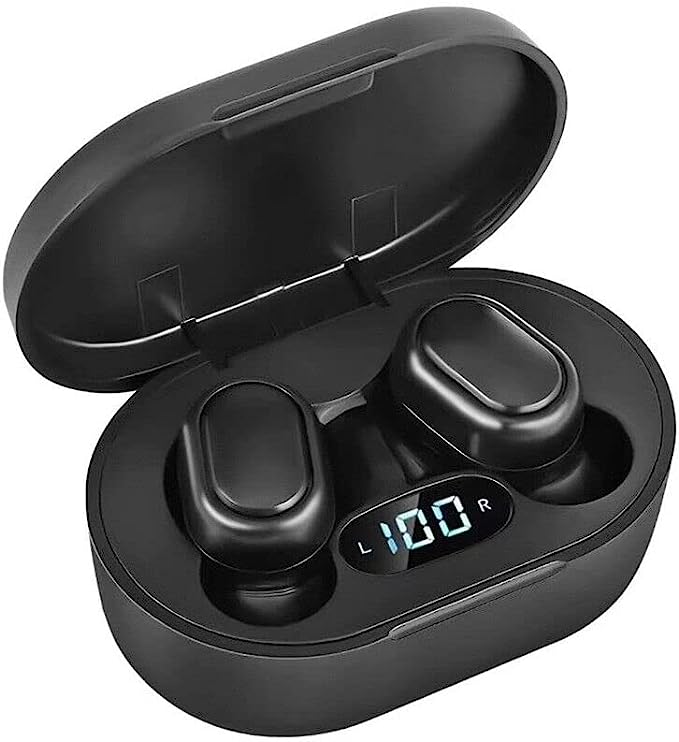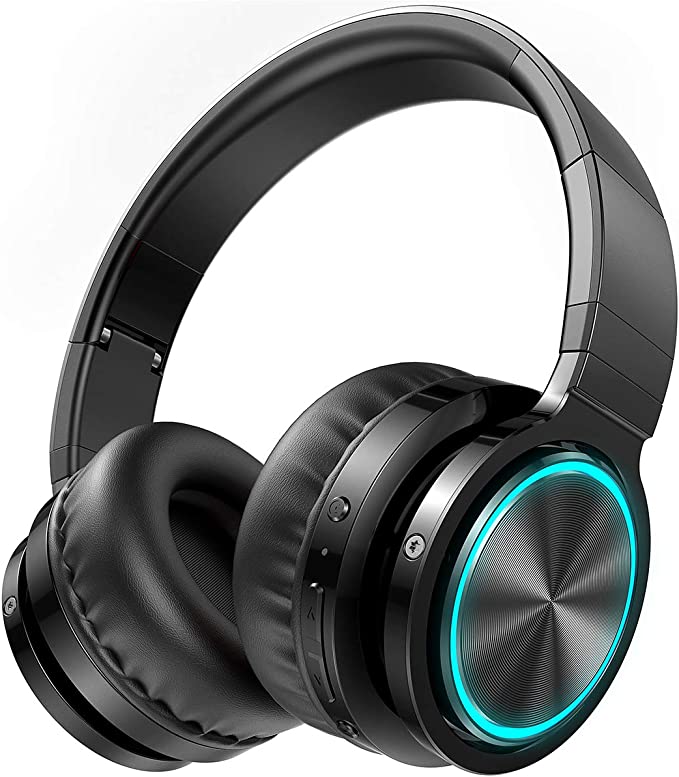Remember the not-so-distant past? A time defined by the ritual untangling of headphone wires, the frustrating snag on a doorknob, the pocket bulge of cables. Thankfully, we’re living through a quiet revolution – the liberation of wireless audio. What was once a premium luxury has rapidly become accessible, with features trickling down into even the most budget-friendly devices.
This democratization of technology is fascinating. It means more people than ever can experience the convenience of truly wireless listening. Today, we’re taking a closer look at one such example: the BD&M BDNM-E7S Wireless Earbuds. Rather than a typical review, think of this as an exploration, a chance to peek under the hood and understand the technology that makes these affordable earbuds tick. Our goal isn’t to sell you a product, but to demystify the buzzwords – Bluetooth 5.0, IPX5, TWS, CVC – and empower you with a clearer understanding of the science powering your listening experience, using the BDNM-E7S as our tangible case study.

The Unseen Handshake: Bluetooth 5.0 and the Magic of Pairing
At the heart of any wireless earbuds lies the invisible thread connecting them to your phone, tablet, or computer: Bluetooth. The BDNM-E7S utilizes Bluetooth 5.0, a specification that, while not the absolute latest, represents a significant leap forward compared to older versions and is perfectly suited for the demands of True Wireless Stereo (TWS) earbuds.
But what does “5.0” really mean for you? It’s less about raw speed – a common misconception – and more about stability and efficiency. Imagine Bluetooth not as a data superhighway, but as a reliable, energy-saving pathway for your audio. Bluetooth 5.0 is particularly adept at maintaining a stable connection between your device and both earbuds simultaneously, a crucial task for TWS where the left and right channels need to stay perfectly synchronized. It also boasts improved power efficiency compared to its predecessors (like Bluetooth 4.x). This means the tiny batteries inside each earbud can last longer on a single charge, letting you enjoy your music or podcasts without constantly worrying about plugging in. While the theoretical range is often cited as 10 meters (about 33 feet), real-world performance depends heavily on obstacles like walls and interference from other devices. Still, for everyday use – phone in your pocket, laptop on the desk – Bluetooth 5.0 provides a generally solid link.
The product description highlights “One Step Pairing Technology.” This refers to the convenience after the initial setup. Think of the first time you pair the earbuds like a formal introduction or a digital handshake: you put the earbuds in pairing mode, find them in your device’s Bluetooth menu, and connect. Once that introduction is made, the earbuds store your device’s information. Subsequently, simply opening the charging case often prompts the earbuds to automatically power on and reconnect to the last paired device. It’s this seamless reconnection that feels like “one step” and forms the foundation of a smooth, frustration-free wireless experience. Standard Bluetooth protocols like A2DP (for stereo audio streaming), AVRCP (for remote control like pausing or skipping tracks), HSP, and HFP (for headset and hands-free calling functions) ensure broad compatibility across various devices.

Soundscapes and Conversations: Stereo, Sound Quality & Talking Clearly
Moving from connection to the core experience: sound. The BDNM-E7S promises Stereo Sound Quality. In its simplest form, stereo means sound is delivered through two distinct channels – left and right. This allows audio engineers to create a sense of space and directionality. Instruments can sound like they are positioned to your left or right, vocals can seem centered, and sound effects can pan across, creating a more immersive listening experience compared to mono (single channel) audio.
While marketing terms like “HiFi,” “Crystal Clarity,” and “Deep Resonant Bass” are subjective and depend heavily on factors like the internal drivers (the tiny speakers), the earbud’s acoustic design, the Bluetooth audio codec used (basic SBC is standard, higher quality codecs like AAC or aptX are less common in budget models), and personal preference, the fundamental goal of stereo sound in any earbud is to deliver that two-channel spatial audio information clearly.
Where things often get confusing is noise cancellation. The BDNM-E7S description mentions “CVC 8.0 noise cancellation.” This is a critical point to understand correctly. CVC stands for Clear Voice Capture, and it is technology designed to improve the clarity of your voice for the person you are talking to during a phone call. It is not Active Noise Cancellation (ANC), which works to reduce the ambient noise you hear while listening to music or trying to find quiet.
Think of it this way: CVC uses the microphones built into the earbuds to pick up not only your voice but also the surrounding background noise (traffic, chatter, wind). Sophisticated algorithms then work to suppress that background noise signal, isolating your voice so that the person on the other end of the call hears you more clearly, rather than a muffled version drowned out by your environment. It’s a feature focused entirely on improving outgoing call quality. While valuable for hands-free calls, it won’t silence the world around you when you’re just listening to music – that’s the job of ANC (which typically involves additional microphones and processing, adding cost and complexity) or the passive noise isolation provided by a good in-ear seal. Understanding this distinction is key to managing expectations.

Life-Proofing Your Listening: Understanding IPX5 and Everyday Durability
Life happens. Whether you’re caught in a sudden downpour on your commute, working up a sweat at the gym, or just clumsy near the sink, knowing your electronics have some level of protection brings peace of mind. The BDNM-E7S boasts an IPX5 waterproof rating. Let’s break down that code:
- IP stands for Ingress Protection. It’s an international standard (IEC 60529) used to classify the degree of protection provided by enclosures for electrical equipment against the intrusion of solid objects (like dust) and liquids.
- The first digit (represented here by X) indicates the level of protection against solid particles. An ‘X’ means the device hasn’t been specifically tested or rated for dust ingress.
- The second digit (the 5) indicates the level of protection against liquids. A ‘5’ rating signifies protection against low-pressure water jets projected from any direction.
What does this mean practically? An IPX5 rating suggests the earbuds can handle sweat during intense workouts and resist light rain or splashes without damage. They are built to withstand moisture encountered in typical active or daily scenarios. However, it’s crucial to understand the limits: IPX5 does not mean the earbuds are suitable for swimming, showering, or being submerged in water. The pressure from submersion or high-pressure jets (like a strong faucet) could exceed the rating and cause damage.
This level of water resistance is achieved through careful design and material choices. The earbuds are constructed from ABS (Acrylonitrile Butadiene Styrene), a common, durable, and cost-effective thermoplastic often used in consumer electronics. Achieving an IPX5 rating also involves precise assembly and potentially the use of seals or protective coatings on internal components to prevent water from reaching sensitive electronics.
Beyond water resistance, the in-ear form factor itself contributes to durability and the listening experience. The goal of an ergonomic in-ear design is twofold: to provide a secure fit that keeps the earbuds in place during movement, and to create a seal within the ear canal. This seal offers passive noise isolation, physically blocking out some external sound, which can enhance perceived audio quality and allow you to listen at lower volumes. Of course, comfort and fit are highly subjective and depend on individual ear shapes and the included ear tip sizes (the BDNM-E7S comes with extra pairs to help find a good match).

Powering Your Playlist: Battery Life, Charging, and That Little LED
True wireless earbuds, by their very nature, rely entirely on their internal batteries. The specifications for the BDNM-E7S state an earbud battery capacity of 45mAh for each side, and a charging case capacity of 300mAh. This translates to a claimed music playback time of approximately 2.5 hours or talk time of about 3 hours per charge for the earbuds themselves (Note: The “About this item” section mentions “4 hours of playback time,” creating a discrepancy. We are relying on the more detailed figures from the “Product information/Specifications” which often tend to be more conservative or specific).
While 2.5-3 hours might not sound like a marathon, it’s typical for budget TWS earbuds where size and cost constraints limit battery capacity. This is where the charging case becomes essential. It acts as a portable power bank specifically for the earbuds. With its 300mAh capacity, it holds enough charge to replenish the 45mAh earbuds multiple times before the case itself needs recharging (the “About” section’s claim of “10 hours with charging case” likely refers to the total potential listening time achieved through these recharges). Simply placing the earbuds back into the case starts the charging process.
Recharging the earbuds takes about 1 hour, while recharging the case itself takes around 2 hours, according to the specifications. One practical point to note is the charging port on the case: it uses Micro USB. While perfectly functional, Micro USB is an older standard compared to the increasingly common USB-C, which offers reversible connectors and potentially faster charging speeds. This might mean carrying an extra cable if your other modern devices use USB-C.
A helpful touch mentioned is the LED Battery Display. This typically refers to LEDs on the charging case itself, possibly showing a digital percentage or a series of lights indicating the remaining charge level of the case. This simple feature removes the guesswork, letting you know at a glance if the case has enough juice to top up your earbuds or if it needs plugging in soon. Like the fuel gauge in a car, it’s a small detail that significantly enhances usability. As with all devices using Lithium-ion batteries, actual battery life can vary based on factors like listening volume, distance from the connected device, ambient temperature, and the age of the batteries.

Conclusion: Empowered by Understanding
Using the BD&M BDNM-E7S as our lens, we’ve journeyed through some of the core technologies that define the modern wireless earbud experience. We’ve untangled the meaning of Bluetooth 5.0, seeing how it prioritizes stable connections and efficiency crucial for TWS devices. We’ve distinguished the true nature of CVC 8.0 – a tool for clearer calls, not silent listening. We’ve decoded the IPX5 rating, understanding its practical protection against sweat and rain. We’ve explored the fundamentals of stereo sound and acknowledged the realities of battery life and charging in compact, affordable devices.
The existence of products like the BDNM-E7S highlights a significant trend: advanced features are no longer solely the domain of high-end gadgets. Technologies developed over years of research and development are steadily becoming more accessible, integrated into devices that fit comfortably within almost any budget.
Ultimately, the value isn’t just in owning the latest tech, but in understanding it. Knowing what Bluetooth 5.0 offers, what IPX5 protects against, or what CVC actually does empowers you. It allows you to cut through marketing jargon, manage your expectations realistically, and make more informed choices – whether you’re considering these specific earbuds or navigating the ever-evolving landscape of personal audio technology. Understanding the science, even at a basic level, transforms you from a passive consumer into an informed user, appreciating the intricate engineering packed into these tiny, ubiquitous devices.




